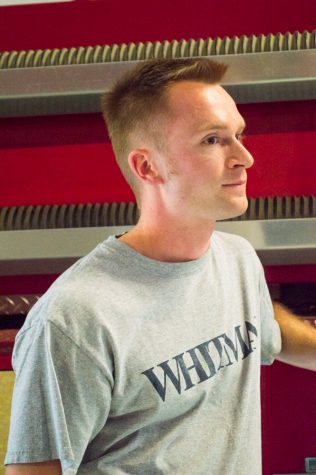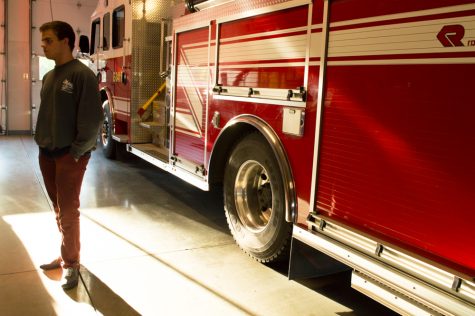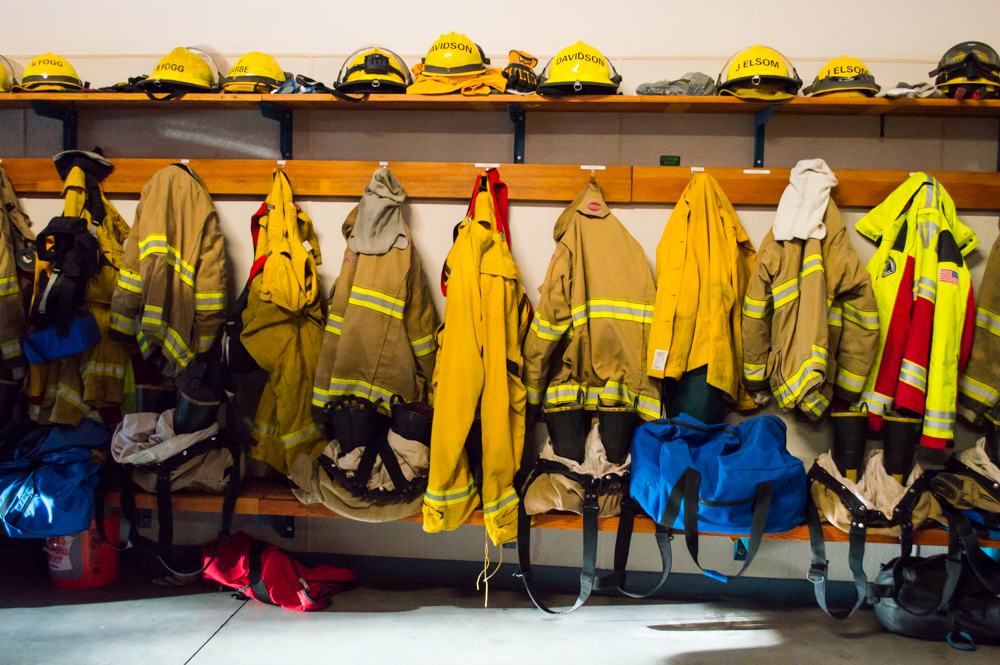Night at the Station
A number of Whitman students, past and former, work as EMT's in Walla Walla. Our reporter visited one at Fire District 4.
October 4, 2017
One night recently, I arrived at the station of Walla Walla Fire District 4 to find all the lights on, but nobody home. Clearly someone was there recently, so I figured the crew was gone on assignment. Sure enough, the ambulance rolled in 10 minutes later and they all piled out.
“Andreas,” I asked, “were you out on call?”
“Nah,” he said, “one of our firefighters broke his collarbone, so we paid him a visit in the ER.”
Andreas Guerrero, ‘20, is a volunteer EMT with Fire District 4. He went through EMT training right out of high school and joined up with the local fire station as a first-year. By far the youngest, and one of the only students working at the department, he nonetheless puts in the same weekly time commitment as his crewmates.
Some of the core staff at Fire District 4 are long-term ‘careers,’ but the vast majority are unpaid volunteers. They still work 50 hours (several 13½ hour shifts) a week. Why put in such arduous effort with such small reward?

Rocky Eastman, the Fire District 4 Chief, said you don’t do it for the recognition. “Not a single guy in that firehouse cares if anyone hears about their rescues. We’re protectors; what matters is doing your job every day and doing it well.”
The City of Walla Walla gets a call every 21 minutes (24 hours a day, 365 days per year) requiring rapid response emergency service. Those calls are split up between a lot of different stations, but the District 4 guys still respond to several a day.
Shifts for fire/ambulance crews are long, uneventful waiting-games interrupted by sudden flurries of frenetic activity as soon as the alarm sounds. The crews take under a minute to get ready, and then they’re out the door.
The wide range of assignments a crew might take on requires advance preparation for any number of contingencies. Old man has trouble breathing on his daily walk? No worries, an ambulance has plenty of spare oxygen tanks. Semi-truck transporting 40 tons of jet fuel rolls over and catches fire on the freeway? A fire hose can pump 1,000 gallons of water a minute, plus flame retardant gel. Soccer mom gets a fender-bender and strains her neck on the way to practice? An ambulance has special padded body-braces; mom gets a comfy ride to the hospital and all her kids get a free stuffed animal (of which the crew has a staggering selection). If a fire crew can’t stop a building burning down, they’ll start with the most personal effects and work to salvage as much as they can.
Many EMS have regular jobs in addition to their emergency work. One of the firefighters at the station is a painter, and one does landscape design. A captain there makes his living installing furnaces
Eastman said the station puts a lot of stock in “unique skill sets” and “diversity on the workforce.”
The station has a distinctly intimate feel. Artie, a student in Walla Walla Community College’s fire science program, gave me an extensive tour around the firehouse. As we walk, I double-take at a lifeless, fully-clothed human form lying face down on a cot across the room.

“Aw, that’s just Rescue Randy,” Artie said, and showed off the remarkably lifelike dummy they kept handy for training purposes. He talked non-stop about every aspect of fire and rescue operations: from ambulance toolkits to firefighter oxygen tank redundancy systems to the EMS master key ring (which will open literally every door in the county).
He said the crew is of the station, and detailed the amount of work that goes into firehouse upkeep. Just listening to him, it’s clear how deeply invested he is in this sort of work. At some point, the line between job and lifestyle gets blurry, and it’s hard to say on which side EMS fall.
Andreas tells me about the tranquility he feels at the station. He talked about the honesty of the challenges he faces there, and the counterweight they offer to Whitman academics.
As Wes Granath, a former Whitman student-turned professional firefighter said, it’s nice to transition from some “esoteric classroom humanities debate, get out to the fire station, and do some real, hands-on work.”
“It’s certainly challenging,” said Guerrero, “and we put in a lot of hours between training and time on call, but it brings a nice sense of balance.”

